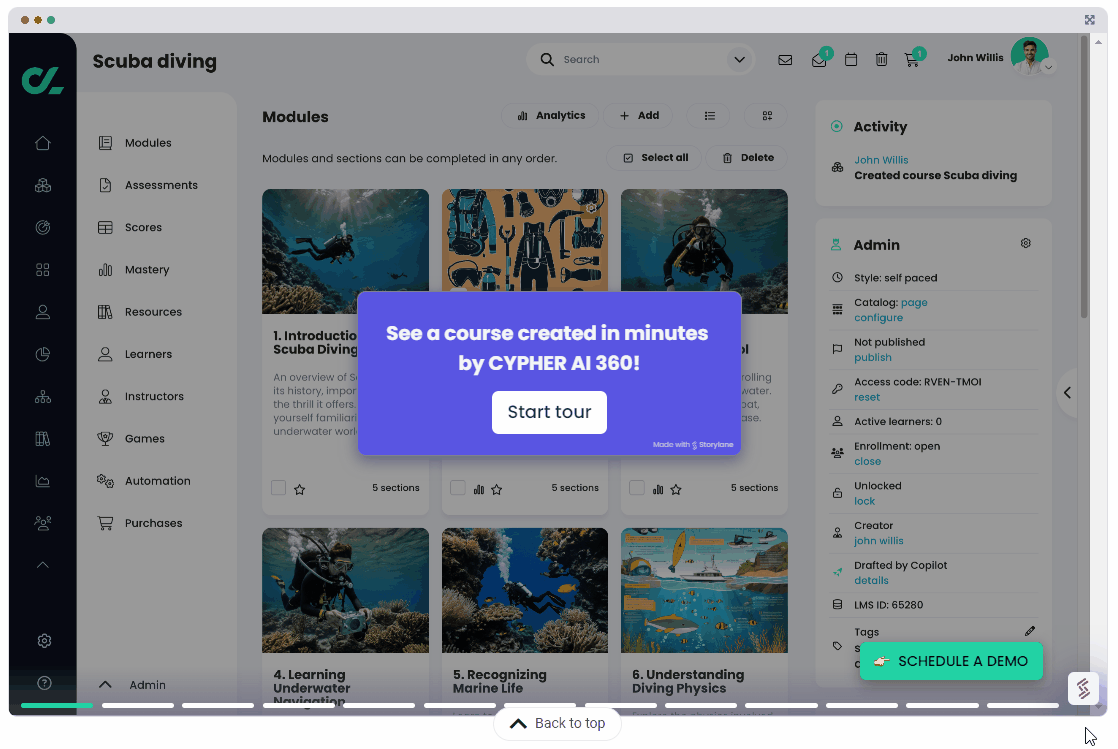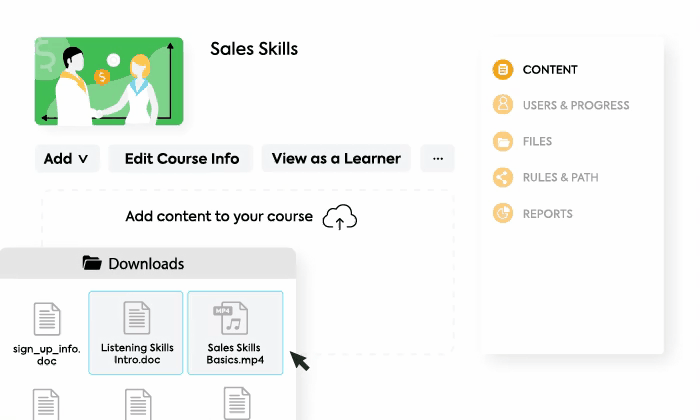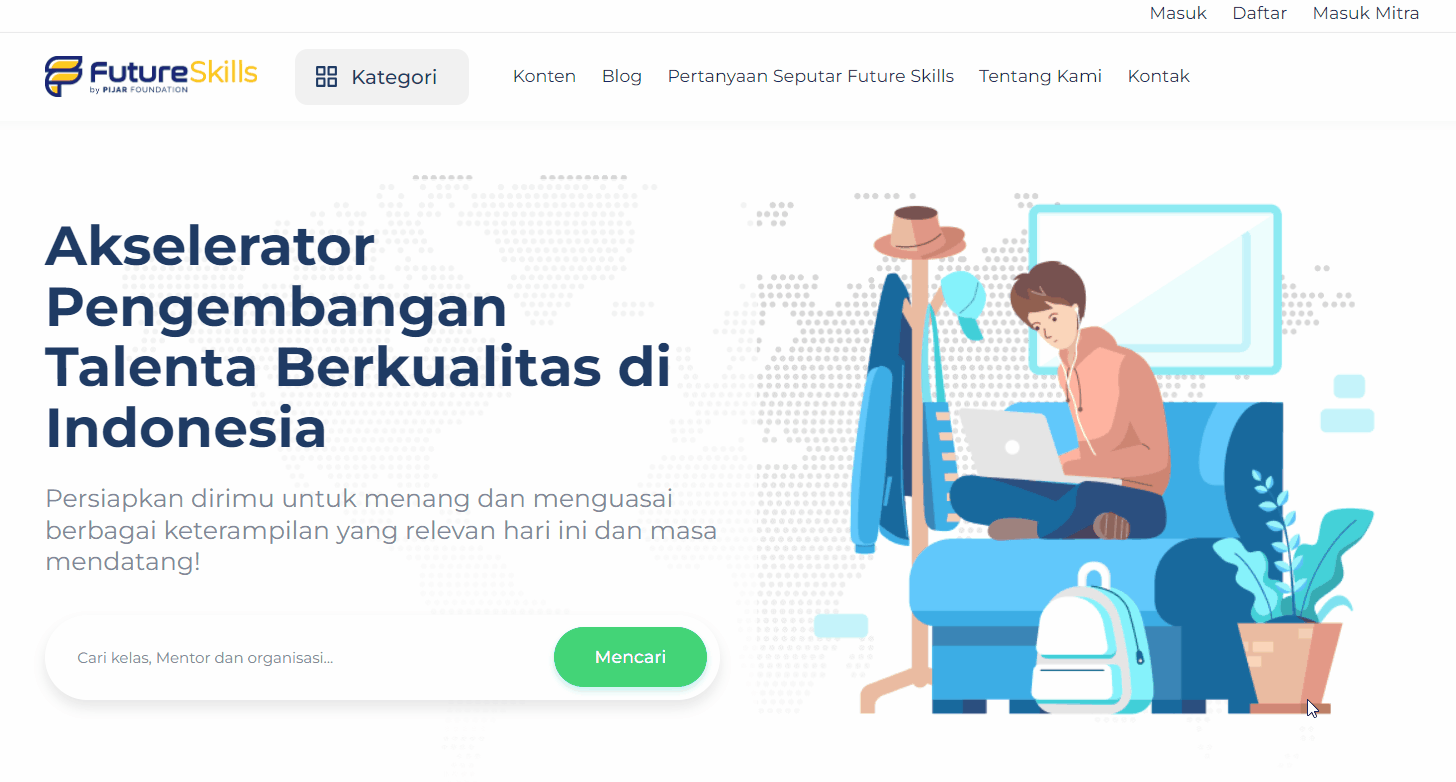
Due to the high demand for online learning, LMS websites are also growing more. What are Learning Management Systems (LMS) examples in 2024? This article presents the best LMS websites along with some reasons why they are exemplary.
You might have heard of Coursera, one of the online course providers that currently has over 129 million registered students. The Coursera website is an example of a Learning Management System website.
So, what is a Learning Management System (LMS)? What are some examples of Learning Management System websites? Here is the full explanation!
Table of Contents
What is a Learning Management System (LMS)?
Learning Management System (LMS) is a web-based software designed to manage the learning system. This management includes:
- Distribution of learning content
- Documentation of learning
- Tracking of learning progress
- Reporting of learning outcomes
A good LMS website is one with complete features that can meet both business and educational needs. Different needs will require different systems.
1. Synchronous LMS
For synchronous learning systems, where learning is carried out interactively between teachers and students also it’s scheduled, so the LMS needs to include interactive tools as well. Examples of such features include:
- Video call: A feature to manage virtual classrooms, including breakout rooms for small group discussions.
- Live chat: A real-time chat feature to facilitate communication between students and instructors during class sessions.
- Interactive whiteboard: A tool for sharing a digital whiteboard.
- Screen sharing: The ability for instructors or students to share their screens for presentations or live demonstrations.
- Polling and quizzes: Features for conducting polls or quizzes in real-time during sessions to gather feedback or assess students’ understanding.
- Attendance tracking: A tool for tracking student attendance during synchronous sessions.
- Recording and playback: Facilities to record class sessions and allow students to replay missed sessions or use them for revision
2. LMS Asynchronous
Meanwhile, for asynchronous learning systems where learning is done one-way and is not tied to a schedule, the tool requirements are also different. Examples of features include:
- Content management – A content management system that allows instructors to upload and organize learning materials such as videos, documents, presentations, and articles.
- Assignment submission – A feature to collect assignments given by instructors and allow students to upload their assignments.
- Quizzes and exams – Tools to create and manage quizzes and exams that students can take independently, with various question types such as multiple choice, short form, and essays.
- Feedback and grading – A feature to provide feedback and grades to students, including grading rubrics and instructor comments.
Although there are broadly two types of LMS, a single LMS website can be designed for both synchronous and asynchronous learning.
Due to the many elements managed in this system, it can be said that LMS is more complex compared to a Content Management System (CMS).
That’s a short explanation of the Learning Management System. Next, here are some examples of LMS websites that have great features and can be a reference if you want to develop an LMS.
Best Learning Management Systems (LMS) Examples in 2024
Here are some examples of Learning Management Systems from the perspective of LMS developers:
1. CYPHER Learning

One example of an LMS is CYPHER Learning founded by Graham Glass, a professor from the University of Texas, Dallas, in 2009.
This platform has been awarded by Forbes Advisor as the best LMS in 2023 and 2024 as it helps reduce administrative workload and increases content availability.
CYPHER Learning is designed to meet the needs of various industries, from nonprofits, content creators, financial institutions, and higher education institutions, to elementary schools.
Here are some of the advantages:
- There are some e-commerce features
- There is a learning path feature based on the goals set
- Instructors can advance students to the next level based on their competencies
Here are some of the disadvantages:
- Support is not fast enough
- Pricing is less transparent
2. TalentLMS

Another top Learning Management System (LMS) is TalentLMS, which is one of the best LMS options for SMEs. This LMS is easy to set up and use with a drag-and-drop interface.
The platform offers numerous features, including live sessions, tests, quizzes, learning paths, completion rules, user role customization, video conferencing, learning reporting, and third-party integrations.
TalentLMS offers a free service for users with fewer than five members, making it a great option for small teams.
Advantages:
- Free forever for up to 5 users with 10 courses
- Supports more than 30 languages
- Easy platform for selling courses online
- Includes soft-skill training from TalentLibrary
Disadvantages:
- There are upload limits
- No TalentLibrary option for the free version
- Costs $149 per month to use a custom domain
3. Future Skills

Next, FutureSkills is one of the best Learning Management Systems we have chosen. This LMS platform is owned by the Pijar Foundation and it was developed by the multinational software developer Tonjoo.
This LMS offers a variety of features highly suitable for learning systems, including registration systems, learning content management, the creation of interactive content such as quizzes and post-tests, e-commerce, and multi-tenant features for third parties.
With supportive features and diverse learning materials, FutureSkills currently has over 20,000 active users and more than 100,000 page views per month.
Advantages:
- Features White-label/Tenant for companies with their own LMS platforms
- Supports various learning activities, such as lectures, webinars, mentoring, internships, and workshops
- Affiliated with over 500 universities and 70 companies in Indonesia
Disadvantages:
- The platform is still under development, so some features are not yet available
- LMS features are currently limited to higher education, general, and industrial needs
4. Cakap

Cakap is one of the best examples of a Learning Management System that you can use as a benchmark if you plan to create your own LMS. Currently, Cakap manages over 4 million users with more than 1,800 instructors on its platform.
This LMS, which also collaborates with Tonjoo in development is a learning platform that focuses on foreign language courses such as English, Japanese, Korean, Mandarin, and even Indonesian.
However, Cakap has now expanded into non-language learning, such as engineering, technology, business and management, agriculture, creative media, tourism, and many more.
Advantages:
- Capable of handling a large number of users without impacting page speed
- Includes features for managing video content and live conferences
5. Moodle

The last example of a Learning Management System that we consider quite good is Moodle. Although it’s an open-source LMS, the platform’s user interface is fairly easy to navigate.
The available features are also quite comprehensive, including mobile learning, video conferencing, plagiarism detection, and integration with massive open online courses (MOOCs).
Here are some of The Advantages:
- Free, as it’s an open-source platform
- Includes cPanel installation
Here are some of The Disadvantages:
- The interface is not very modern
- Lacks customer support
Which Learning Management System Do You Consider the Best?
Those are some examples of the best Learning Management Systems (LMS) from our perspective as software development experts. You can also create a Learning Management System website on WordPress using top WordPress plugins like LearnPress.
Tonjoo is a software development consultancy with extensive experience in developing Learning Management Systems used by tens of thousands of users. Some of Tonjoo’s LMS website projects include FutureSkills and Cakap.com.
If you need assistance in developing a website, you can collaborate with the Tonjoo team. In addition to our portfolio in LMS, Tonjoo also has experience in developing WordPress-based websites for clients like Universitas Gadjah Mada, Hipwee, and more.
If you’re interested in collaborating, you can reach out to the Tonjoo team through our contact page.

References:
- These 3 charts show the global growth in online learning – https://www.weforum.org/agenda/2022/01/online-learning-courses-reskill-skills-gap/
- Coursera’s Latest Learner Outcomes Report Highlights the Real-World Impact of Online Learning – https://investor.coursera.com/news/news-details/2023/Courseras-Latest-Learner-Outcomes-Report-Highlights-the-Real-World-Impact-of-Online-Learning/
- Online Education – Worldwide – https://www.statista.com/outlook/emo/online-education/worldwide
Updated on August 9, 2024 by Anisa K. Juniardi



